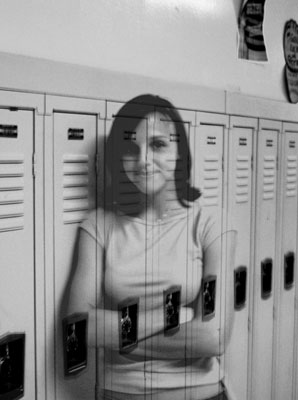All Nonfiction
- Bullying
- Books
- Academic
- Author Interviews
- Celebrity interviews
- College Articles
- College Essays
- Educator of the Year
- Heroes
- Interviews
- Memoir
- Personal Experience
- Sports
- Travel & Culture
All Opinions
- Bullying
- Current Events / Politics
- Discrimination
- Drugs / Alcohol / Smoking
- Entertainment / Celebrities
- Environment
- Love / Relationships
- Movies / Music / TV
- Pop Culture / Trends
- School / College
- Social Issues / Civics
- Spirituality / Religion
- Sports / Hobbies
All Hot Topics
- Bullying
- Community Service
- Environment
- Health
- Letters to the Editor
- Pride & Prejudice
- What Matters
- Back
Summer Guide
- Program Links
- Program Reviews
- Back
College Guide
- College Links
- College Reviews
- College Essays
- College Articles
- Back
What They Didn't Know
I remember the first time I was seen differently by my peers because of my cultural background, I was in 7th grade. It had been a perfectly normal morning, and I was sitting in my world cultures class doing the assigned reading- which just happened to be about Indian culture- when suddenly a boy near me raised his hand and asked the teacher, “Why do Indian people wear red dots on their foreheads? Don’t they know it looks weird, like blood or something freaky?” As I stared at him in shock, several of my classmates started laughing at what he had said, and many gave me strange looks- I was very surprised to find that their looks were not kind, but full of wary accusation. Some were even scornful, as if they had just realized that I was not good enough or that I was too different from everyone else because of my Indian identity. A girl behind me whispered “freak” into my ear as I sat trembling in my chair. I listened to my teacher shrug and reply “Huh. I don’t know why they do that. Anyway, it’s not important.” I couldn't believe what I was hearing; because what they didn’t know was that Indian women put red vermillion powder on their forehead and in the part of their hair every morning as a symbol of their marriage. They didn’t know that in India, red is considered the color of togetherness and understanding, signifying the closest of bonds.
I realize now that my classmates shunned me in that moment because they simply did not understand, and that as human beings it is a natural reaction to turn away from that which we see as different from what we are familiar with. Almost every day we hear on the news that there are two groups fighting each other in some far-away nation, tearing their country apart through war because of differences in religion, race, ethnicity, or cultural practice. Yet, what the media does not tell us is that this cultural discrimination can be found in almost every social environment in which people with different backgrounds frequently interact. Just think of your own school environment- have you ever noticed that kids with similar racial or ethnic backgrounds tend to group together and form friendships only among themselves? This cultural separation that is all too common in middle schools doesn’t allow students to gain different perspectives, doesn’t let kids broaden their minds to a variety of possible solutions to a social issue, doesn’t let them be open to the unexpected or to things that are different; and this openness is the key to social change. Before we assume that no, we will not get along with that person because they don’t share our religious beliefs or because they speak another language that we may have some trouble understanding, we need to stop and listen. Listen to what they have to say; remember that everyone has a story. Every being on the planet has a story that is unique to their own personal background, and I believe that sharing these stories is what opens our minds and helps us realize the similarities we all share regardless of the color of our skin.

Similar Articles
JOIN THE DISCUSSION
This article has 1 comment.
9 articles 1 photo 35 comments
Favorite Quote:
“For he shall give his angels charge over you, to keep you in your ways. And they will bear you up in their hands…” Psalms 91:11-12